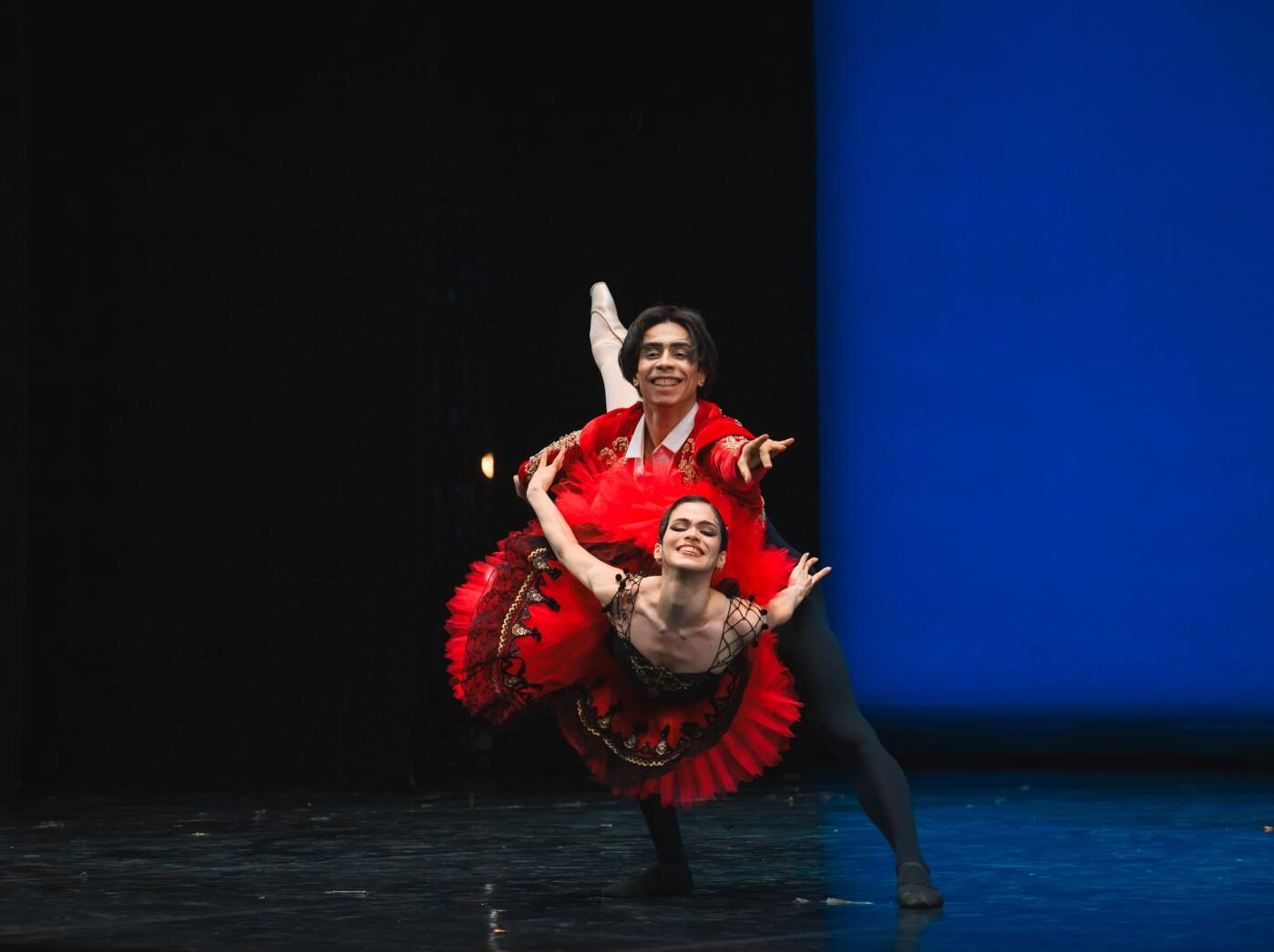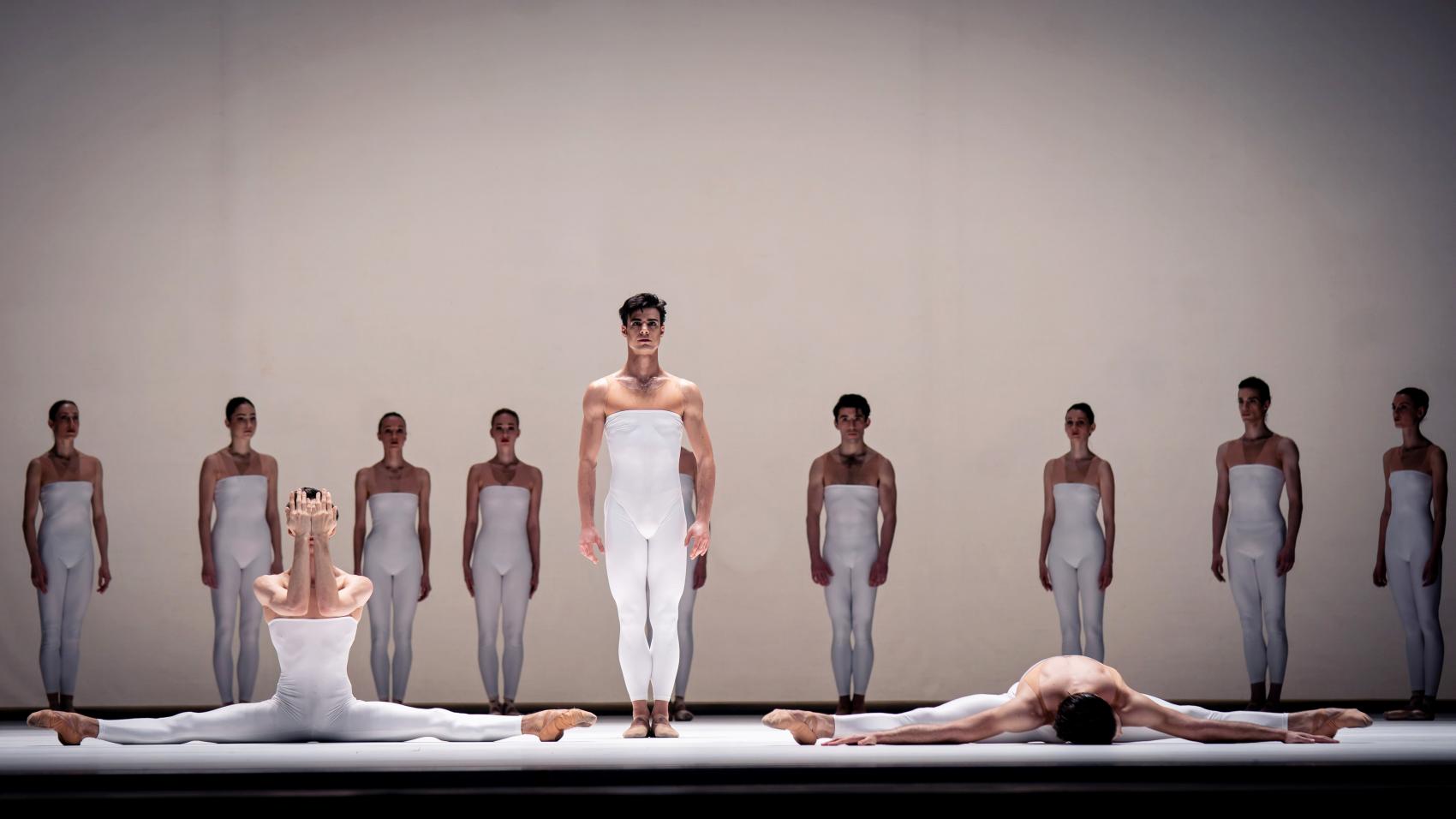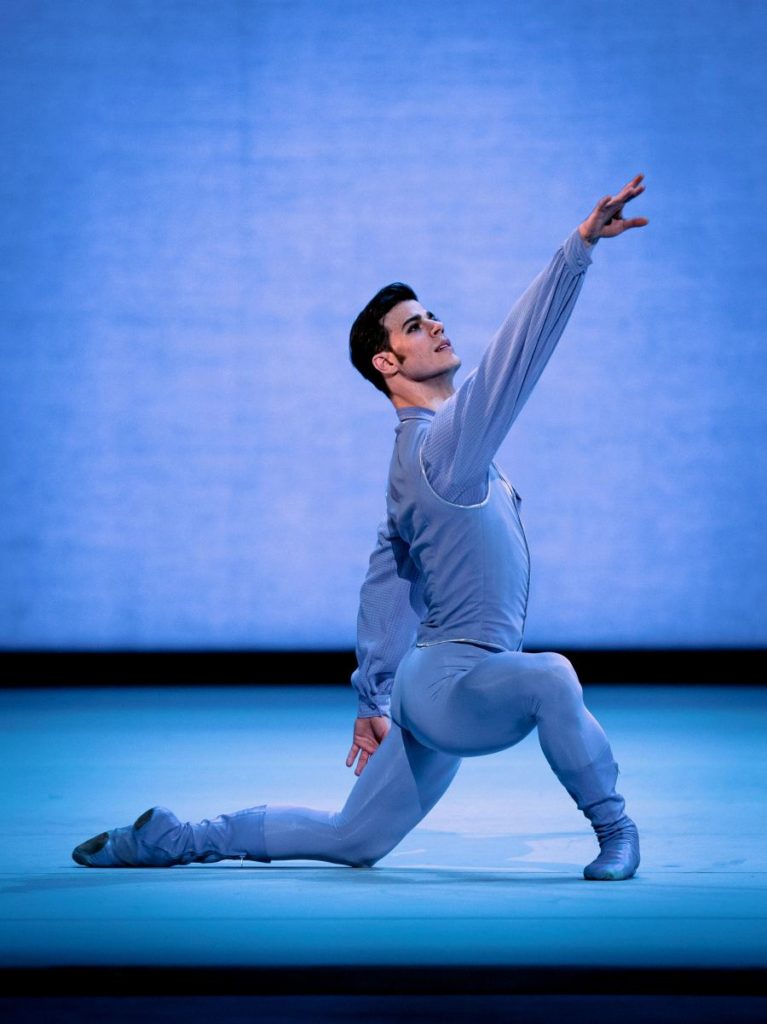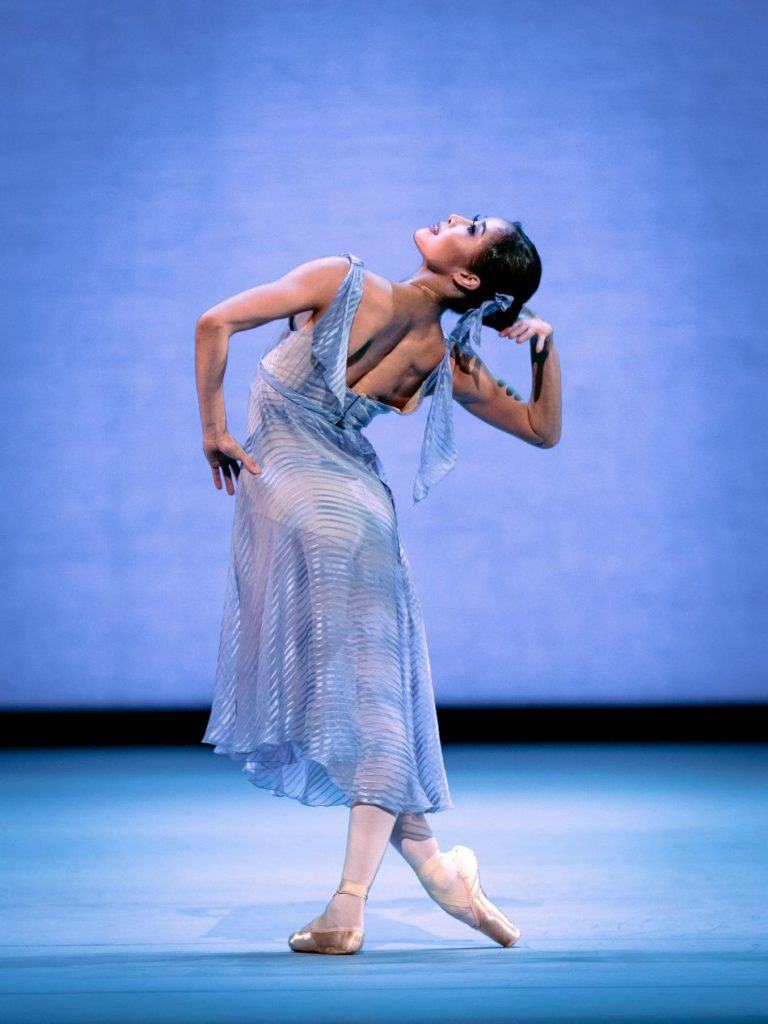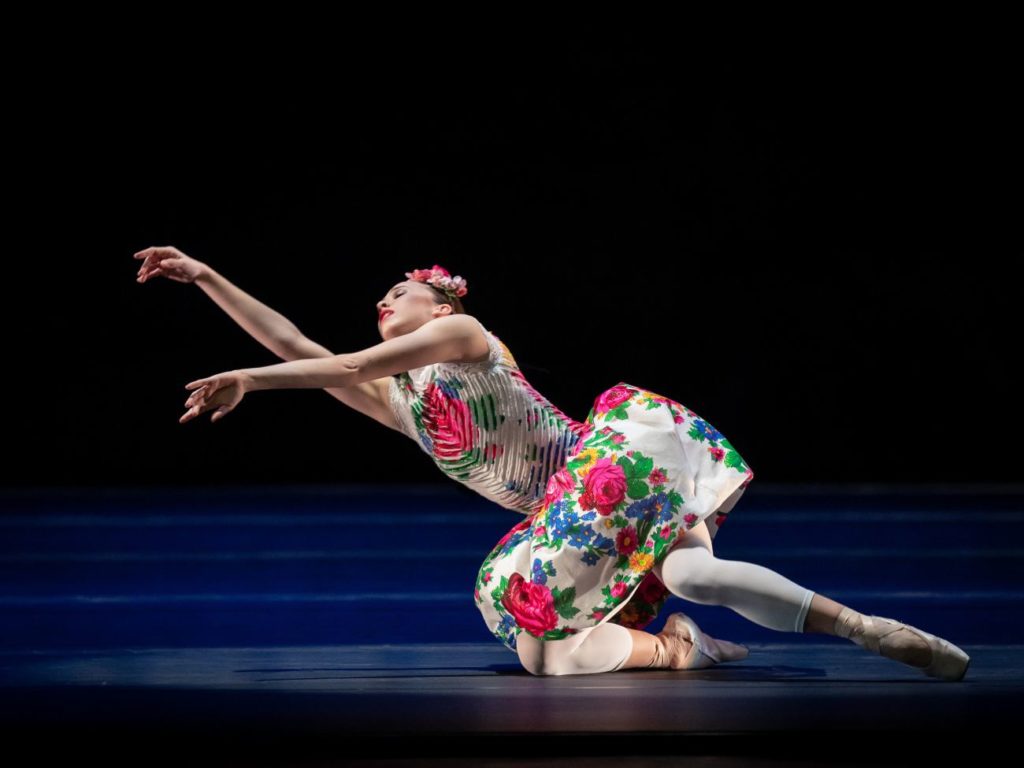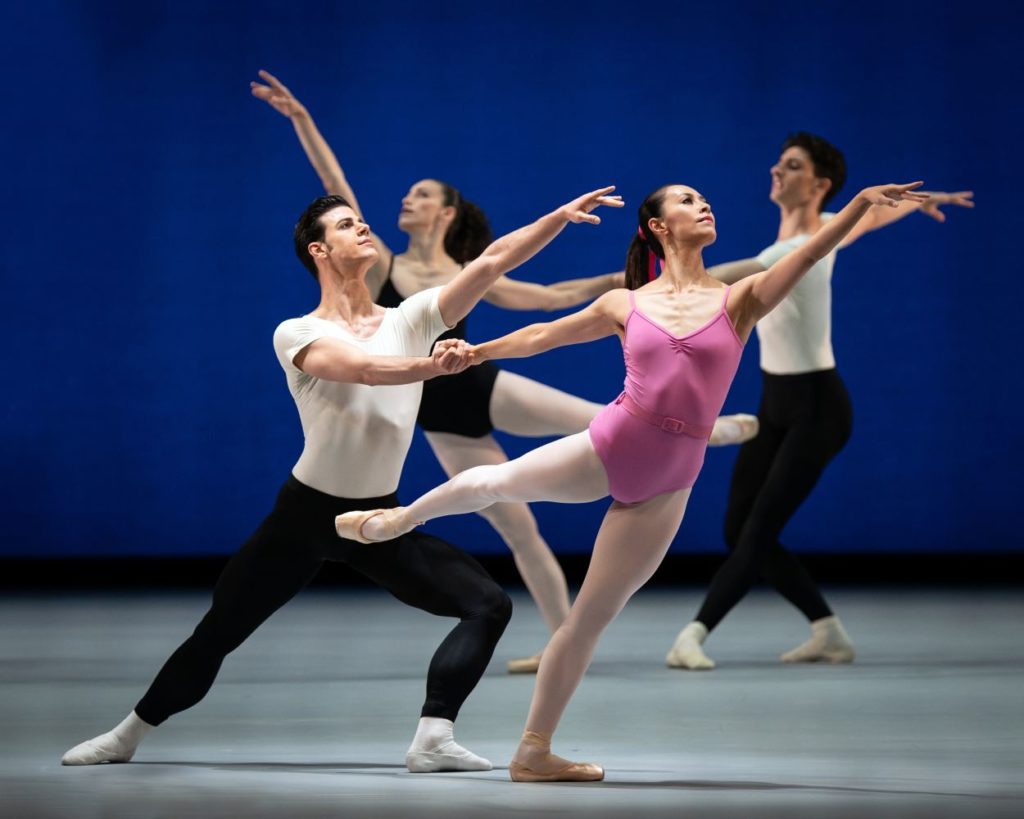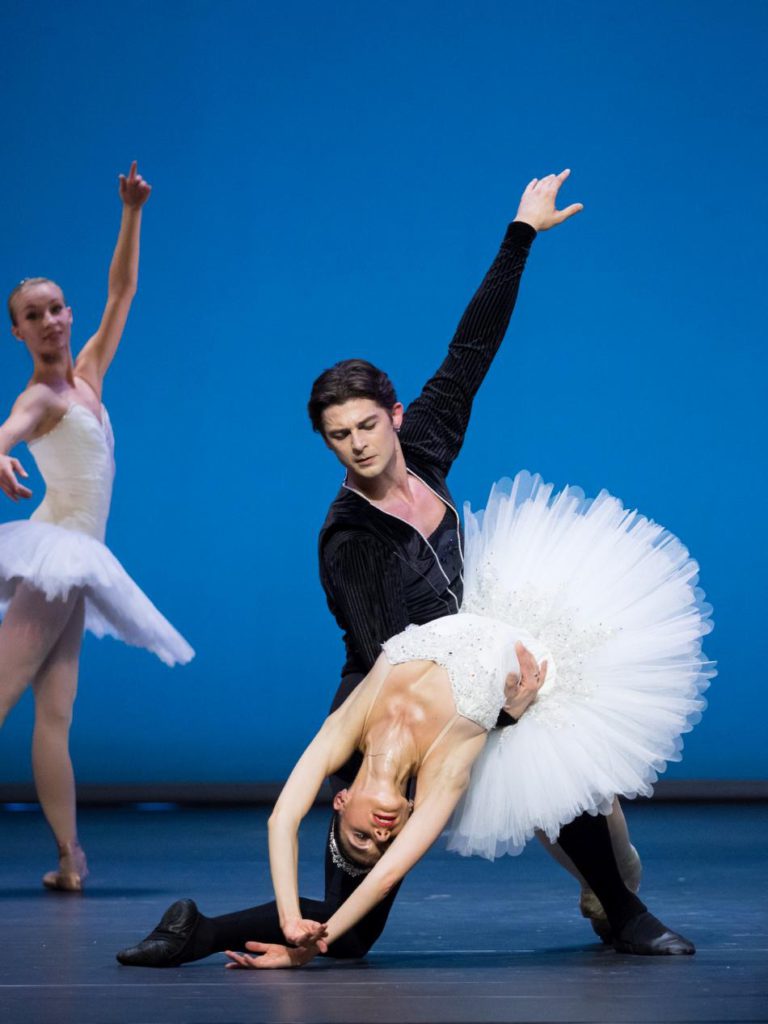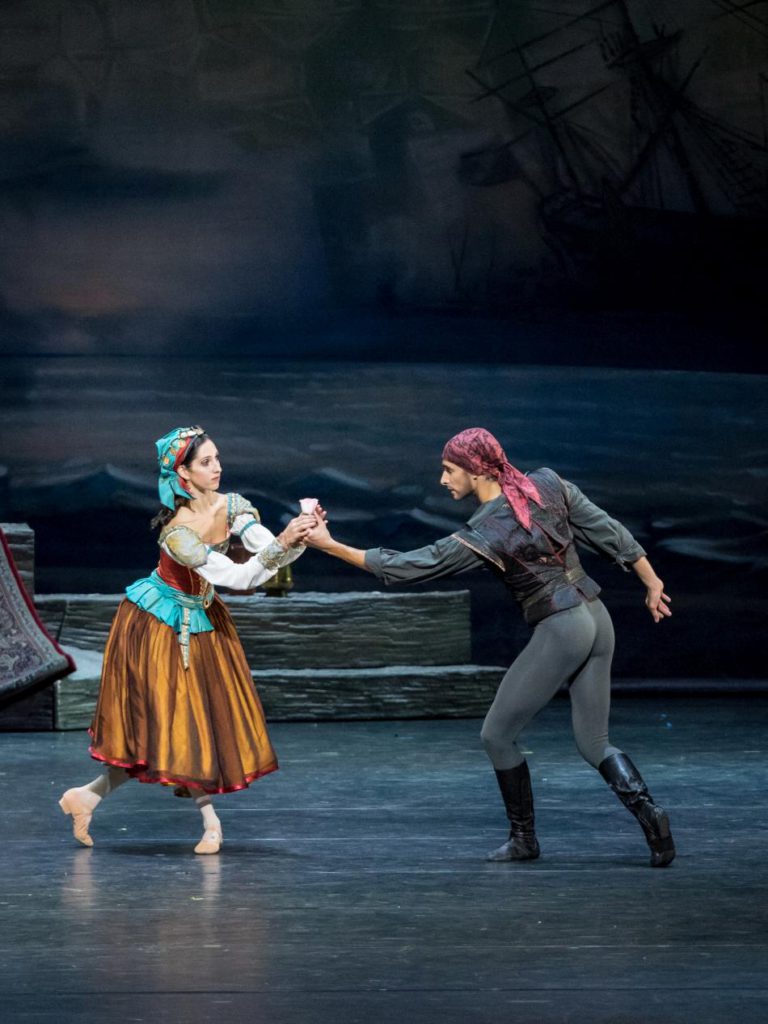Rekindled
“Shifting Symmetries” (“Concertante”/”Brahms-Schoenberg Quartet”)
Vienna State Ballet
Vienna State Opera
Vienna, Austria
December 23, 2023, (online: December 27, 2023)
by Ilona Landgraf
Copyright © 2024 by Ilona Landgraf
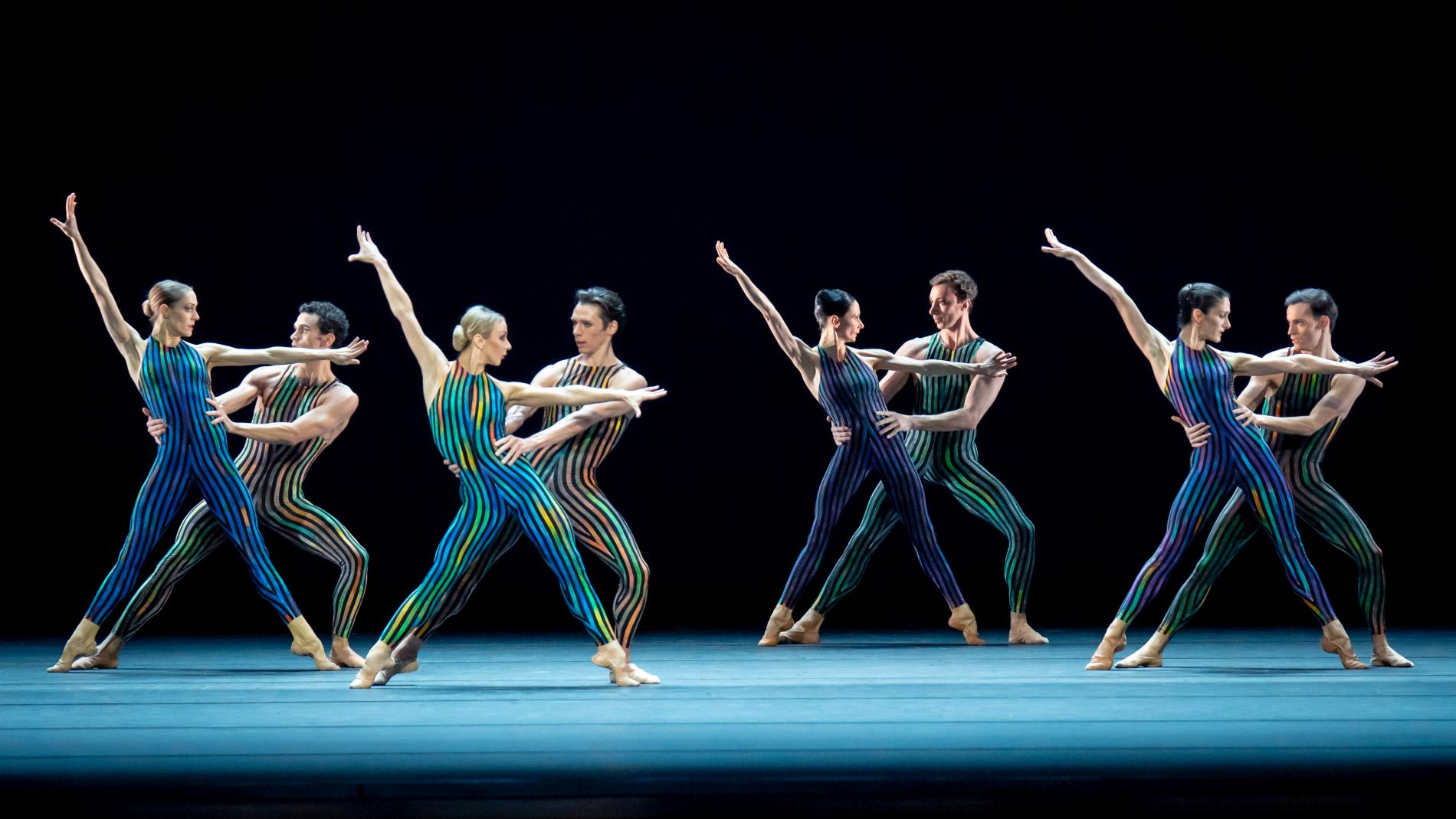 The Vienna State Ballet’s newest triple bill combines pieces by Hans van Manen, William Forsythe, and George Balanchine. As Forsythe doesn’t allow video streaming of his works, his In the Middle, Somewhat Elevated wasn’t part of the online broadcast on December 27th (which showed a recording of the premiere on December 23rd).
The Vienna State Ballet’s newest triple bill combines pieces by Hans van Manen, William Forsythe, and George Balanchine. As Forsythe doesn’t allow video streaming of his works, his In the Middle, Somewhat Elevated wasn’t part of the online broadcast on December 27th (which showed a recording of the premiere on December 23rd).
I’ve often been unhappy about the Viennese performances, but what’s to expect when the choreographies given to them are mediocre? This time though, a meaty dance-diet was on the menu, and the company rose splendidly to the occasion.
Concertante (1994) has the punchy elegance that van Manen is known for. It’s sophisticated (but without frills) and so densely energetic that my eyes stayed glued on the dancers. Van Manen doesn’t choreograph pretty steps. His dancers prance cooly and strongly, throw challenging glances, and are forcefully present on stage. (more…)
